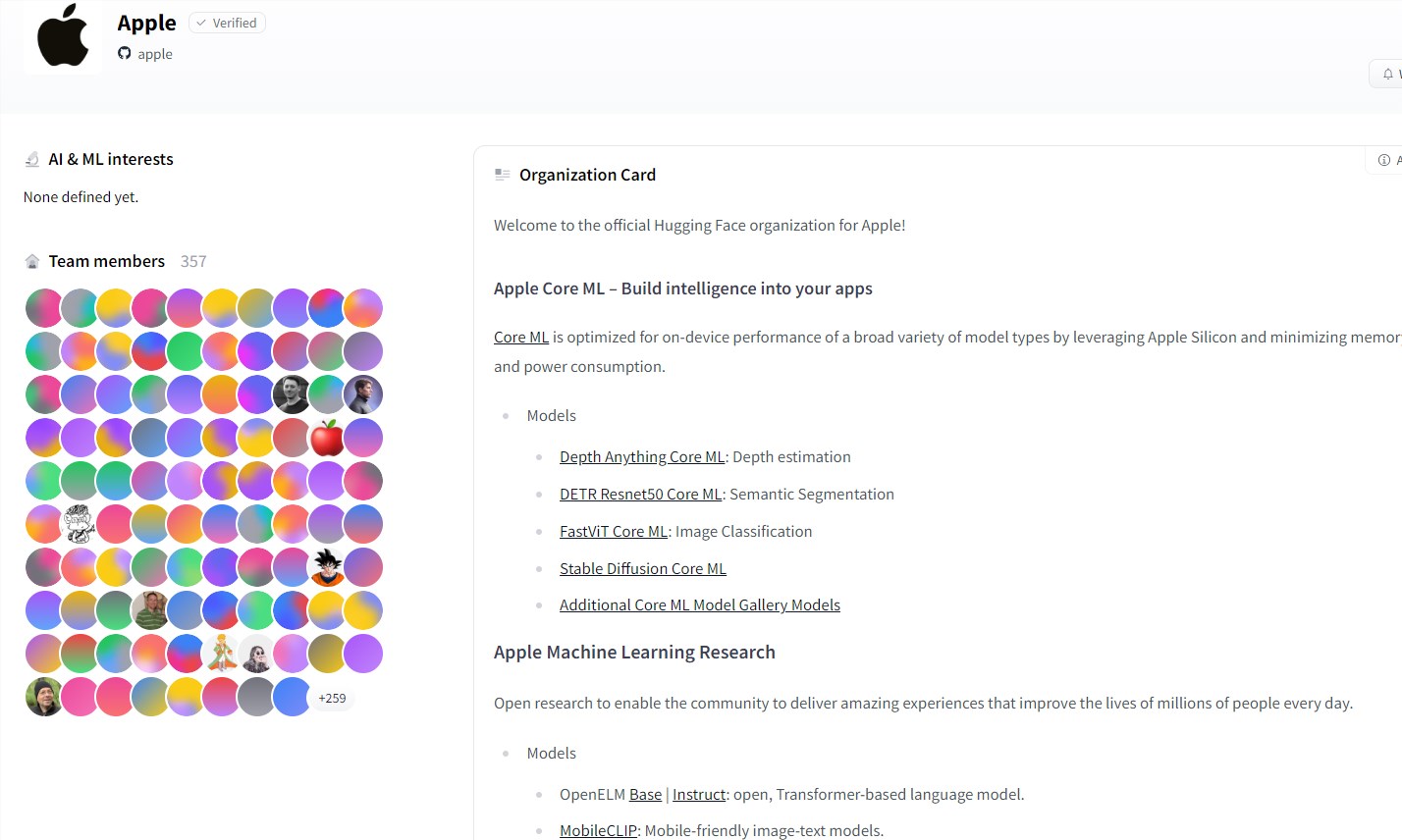Apple has made significant strides in providing cutting-edge on-device AI capabilities for developers. The tech giant recently released 20 new Core ML models and 4 datasets on Hugging Face, a leading AI model and code-sharing community platform. This move underscores Apple's commitment to advancing AI while prioritizing user privacy and efficiency.

URL: https://huggingface.co/apple
Clement Delangue, co-founder and CEO of Hugging Face, emphasized the significance of this update. Delangue stated, "Apple has made a significant update by uploading many models to their Hugging Face repository and integrating them with their Core ML framework. This update includes many exciting new models focused on text and image processing, such as image classification or depth segmentation. Imagine an application that can easily remove unwanted backgrounds from photos or instantly recognize objects in front of you and provide their names in a foreign language."
The newly released Core ML models cover a wide range of applications, including FastViT for image classification, DepthAnything for monocular depth estimation, and DETR for semantic segmentation. These models are optimized to run exclusively on user devices without requiring a network connection. This approach not only enhances application performance but also ensures the security and privacy of user data.
Delangue highlighted the importance of on-device AI, saying, "Core ML models strictly run on user devices without needing a network connection. This makes your applications incredibly fast while ensuring user data remains private."
The release of these models and datasets on the Hugging Face platform demonstrates the growing collaboration between Apple and this AI community platform. In recent months, Apple has been actively collaborating with Hugging Face, supporting various initiatives such as the MLX community and integrating open-source AI into Apple Intelligence features.
Industry experts believe that Apple's focus on on-device AI aligns with the broader trend of shifting computational power from the cloud to edge devices. By leveraging the capabilities of Apple Silicon, minimizing memory footprint and power consumption, Core ML enables developers to create intelligent applications that offer seamless user experiences without compromising privacy or performance.








